by Greg McConiga
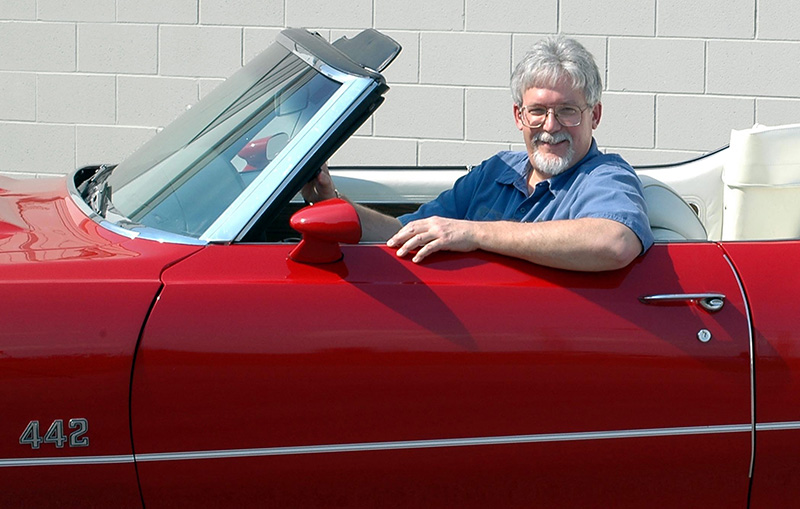 If you’re like a lot of mechanics I’ve known (Editor’s Note: Greg prefers “mechanic†to the more politically-correct “technician†for reasons we’re sure he’ll tell you about in a future column), you’ve probably circled the brave new world of performance engine and race car building like a shark at a shipwreck since first discovering internal combustion. Come on in… the water’s fine!
If you’re like a lot of mechanics I’ve known (Editor’s Note: Greg prefers “mechanic†to the more politically-correct “technician†for reasons we’re sure he’ll tell you about in a future column), you’ve probably circled the brave new world of performance engine and race car building like a shark at a shipwreck since first discovering internal combustion. Come on in… the water’s fine!
Performance work is more than fixing what’s broken or doing preventative maintenance. It’s more than work-a-day, pedestrian repairs or color-by-numbers diagnostics. It’s where design, engineering, preparation, and assembly converge and where every part and every step shows your skill — or reveals your weaknesses.
Maybe you like the challenge of finding ways to reliably increase power and you listen to the sound of a finely tuned, high-output engine like a musician listens to a favorite symphony. Perhaps you find the aroma of exotic fuels and oils a bit intoxicating. Maybe you’ve helped out on a project or two… did a few bolt-ons on your own ride or helped out the brother-in-law with his old-school muscle car build. Maybe you’d just like to learn more, or actually begin working in the world of high performance building. If so, then HOT ROD Professional is for you. Even if you’ve got quite a bit of experience in the field, we hope you’ll pick up some new tricks and tips that will help you in your quest for more torque and horsepower.
Our goal is to help you transition from commercial mechanic to performance builder. How far you go is strictly up to you and your willingness to spend your hard-earned money on the tools and equipment needed to build power, and how committed you are to a continuous, lifelong learning process. You need to get your arms around a couple of things right now: Good ain’t cheap, and cheap ain’t good, and that’s true 100% of the time if you’re talking about racing tools, racing parts, or race-quality engine machining. There might be people who will argue this point, but they won’t be the same people you see in the winner’s circle on a consistent basis.
From a learning standpoint, no racer who’s every lived can tell you how deep that particular rabbit hole goes. Everyone is somewhere on the path and the guy who claims to know it all just hasn’t figured out that there always have been and always will be a long list of “unknown unknowns.†Beware of those with “all the answers†because that means they’ve stopped asking questions, and questions are the life’s blood of learning! A good builder has to be prepared to learn or re-learn everything all the time. You should be constantly refining your tools and techniques. “Because we’ve always done it this way†is a recipe for disaster in racing.
The investment in frustration, time, and money isn’t something you can ignore. You’ve got to love this to do this because, frankly, there’s no way to get paid for every hour you’ll spend on it. If a healthy return on your investment is your goal, this may not be your best use of time and resources. This is more about the personal challenges of bettering your last effort than it is about making a pocketful of cash. I’m not saying you can’t make a living at this, I’m just telling you that there are lots easier ways to earn money. Not many people will tell you that right up front.
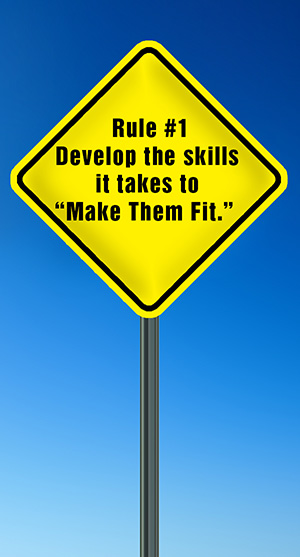 There are a few basic rules; ignore them at your peril. First of all, “Race Car Parts†is a euphemism for “Almost Fits.†You need to know that and you need to begin to develop the kind of skills it takes to “Make Them Fit.†Learn how or re-learn how to use a lathe, a mill, a drill press, a grinder, and a TIG welder. Learn how to fabricate brackets, tools, fixtures and stands. For those cases where the job exceeds your talent, tools and availability of a good machinist or tool and die maker — strike up a friendship because if you can’t make them fit, you need someone who can make them fit. You’re going to need a guy like that in your corner. I’ve worked with car owners who become very frustrated with “almost fits†and do everything they can to hurry the process, trying to cut corners or just stuff the part in place without fixing the problem. I always tell them, “That’s okay with me, but remember that when you cut a tire down at 180 mph because you drove over your $3000 crankshaft!†I’m always amazed at how quickly people grow a “patience bone†once they let that statement soak in. I don’t care how safe the car is, a wreck at any speed is just an uncontrolled experiment in kinetic energy.
There are a few basic rules; ignore them at your peril. First of all, “Race Car Parts†is a euphemism for “Almost Fits.†You need to know that and you need to begin to develop the kind of skills it takes to “Make Them Fit.†Learn how or re-learn how to use a lathe, a mill, a drill press, a grinder, and a TIG welder. Learn how to fabricate brackets, tools, fixtures and stands. For those cases where the job exceeds your talent, tools and availability of a good machinist or tool and die maker — strike up a friendship because if you can’t make them fit, you need someone who can make them fit. You’re going to need a guy like that in your corner. I’ve worked with car owners who become very frustrated with “almost fits†and do everything they can to hurry the process, trying to cut corners or just stuff the part in place without fixing the problem. I always tell them, “That’s okay with me, but remember that when you cut a tire down at 180 mph because you drove over your $3000 crankshaft!†I’m always amazed at how quickly people grow a “patience bone†once they let that statement soak in. I don’t care how safe the car is, a wreck at any speed is just an uncontrolled experiment in kinetic energy.
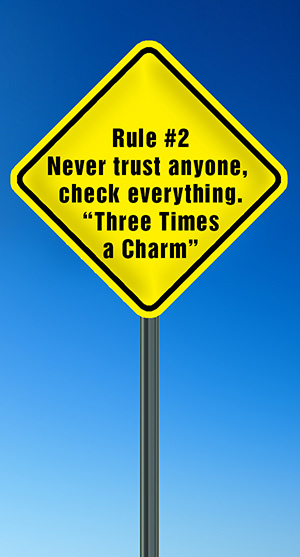 Second, never trust anyone, and check everything. Twice; then once more just to be sure. Don’t trust your machinist or your parts supplier. I don’t care how much money you spend and I don’t care if you think it ought to be right for that kind of money, don’t trust them; check them. Twice. Maybe “trust†is the wrong word, but remember this: Everybody makes mistakes and every so often even incredibly expensive parts whittled out on tooling that holds tolerance to the millionths of an inch makes it past the QC inspector with a defect certain to turn your expensive pile of racing parts into scrap at a nickel a pound. I know, for three or four grand it ought to be right, but sometimes it’s not.
Second, never trust anyone, and check everything. Twice; then once more just to be sure. Don’t trust your machinist or your parts supplier. I don’t care how much money you spend and I don’t care if you think it ought to be right for that kind of money, don’t trust them; check them. Twice. Maybe “trust†is the wrong word, but remember this: Everybody makes mistakes and every so often even incredibly expensive parts whittled out on tooling that holds tolerance to the millionths of an inch makes it past the QC inspector with a defect certain to turn your expensive pile of racing parts into scrap at a nickel a pound. I know, for three or four grand it ought to be right, but sometimes it’s not.
There’s a second benefit to checking the work of others. Are you familiar with the Law of Unintended Consequences? The law that says that the actions you take often yield a result other than the one you intended? As hard as it might be for you to believe it, if your suppliers and engine machinist know you’re checking their work, the quality of their craftsmanship gets better! A bitter pill to swallow if you’ve been doing business with a guy for ten years only to find that what he or she has been delivering to you has been commercial-quality work priced like custom work. I can say this with complete certainty: The only part that won’t work will be the part you didn’t personally check. I don’t care if the heads come assembled, take them apart and double check everything. I don’t care if your machinist told you the bores were round, check them anyway… and don’t be surprised at what you find.
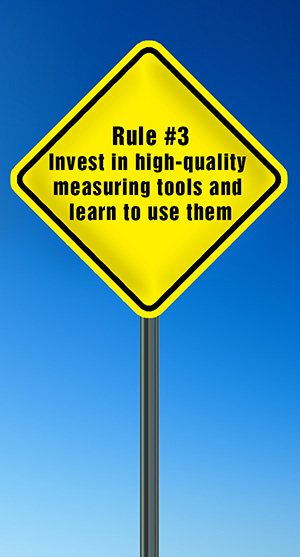 Three, invest in high-quality measuring tools and learn to use them. Buy tenth-reading carbide-faced gear whenever you can (reads to 1/10,000th of an inch.) Some of your suppliers and machinists will curse you for this and tell you you’re a nit-picking knucklehead and that you don’t know what the hell you’re doing. That’s because their tooling is worn out and they can’t hold tolerance! On the other hand, there are superior people out there who can make round holes and they don’t mind a bit when you check them in tenths because they measure in millionths.
Three, invest in high-quality measuring tools and learn to use them. Buy tenth-reading carbide-faced gear whenever you can (reads to 1/10,000th of an inch.) Some of your suppliers and machinists will curse you for this and tell you you’re a nit-picking knucklehead and that you don’t know what the hell you’re doing. That’s because their tooling is worn out and they can’t hold tolerance! On the other hand, there are superior people out there who can make round holes and they don’t mind a bit when you check them in tenths because they measure in millionths.
Measure every hole, every dimension, and every part. Inspect everything for burrs, fit, lubrication holes, clearance, and quality. Learn to think in terms of static clearance and dynamic clearance. Checking things on the bench is one thing. Allowing for distortion or growth under load, pressure and heat is another. It’s all part of checking racing parts. Twice. I did say twice, didn’t I? Check every part in every position — remember that most parts are not static and clearance must be checked throughout the part’s entire range of motion. Twice.
Next, write it down (it’s considered particularly good form if you write it down where you can actually find it later). Keep a loose-leaf binder on every project, or invest in an engine build log book program and keep track of everything you do. Keep part numbers, quantities, instructions, and every measurement you can think of. If the worst should happen, it will help you find the cause of failure during the post mortem. If the cause of failure wasn’t a poor parts choice or the design, the parts list helps you re-create your little monster with a minimum of fuss.
Inventory all your parts on arrival, verify the count, and write that down. Measure everything and write that down. Learn brutal organization skills. Buy piston and parts trays, magnetic trays, and cheap trash bags to wrap everything up in so it can’t migrate to the nearest floor drain. Wrapping it all up also keeps everything already cleaned clean until assembly. Buy anti-fatigue mats and put them all around your workbench because aluminum doesn’t bounce — don’t ask me how I know that. There are immutable rules that apply to a dropped tool or part: It will be the most expensive thing on the workbench; it will land in a way that causes maximum damage; it will roll to the exact geometric center of the nearest immovable object, just out of reach of your longest magnet, or it will drop through a drain grate measurable smaller than the smallest dimension of the aforementioned dropped object, directly over the drain hole to the sewer. You think I’m kidding, don’t you?
Read every bit of the instructions that come with every part and use the tech resources sections online and in the catalogs. Even if you read them last time, read them again — the one thing that doesn’t change in the world of racing is the fact that things are always changing. Take advantage of all the online resources that the suppliers and manufacturers offer online. There’s a ton of information out there for those willing to read.
Expect that your engines, transmissions, and differentials will break. All a race car is is a rolling test lab; you begin racing because it’s fun and “affordable†(in the stock or near-stock classes). You decide to go in a little deeper, so you step up. Now you don’t have enough power, so you redesign the engine. You can’t hook it up so you build in more traction. You’ve got power and traction, so you smoke the transmission or clutch. You improve the transmission or clutch and the differential grenades. You upgrade the differential and now you’re not making enough power again… and around and around you go.
Everything breaks sooner or later — the failure rate for components that operate at the outer fringes of their design is 100%. Engines break valve springs, drop valves, pound out keyways and bearings, burn pistons, and snap crankshafts, and they’ll break a lot more often without proper maintenance and inspection. If they don’t break, it’s because you’re not making enough power or because you’re smart enough to aggressively maintain them. Sometimes it’s a part failure, sometimes it’s a design or materials failure, and sometimes it’s a driver/car owner failure. If they over-rev it in the water box, or shake the tires hard enough to break bones, you can expect to be replacing parts sooner rather than later. If your owner/driver picks up a drum of Uncle Bob’s Racin’ Gas from a trailer peddler at the track, or skips checking the valve springs or lash for the whole season, it’s still broken all the same. And you’ll have to figure out what went wrong and why.
 Finally, begin every project with the end in mind. Understand that everything you do to the block and reciprocating assembly is for durability and must match the rpm and power output for the application. Everything you do for power is in the cylinder heads, cam, induction, and exhaust system. Before you start, know the class rules for what you’re building. There are head, induction, carb, block, displacement, compression, oiling system type, chassis rules, and safety rules for everything. There are open classes, claimer classes, throttle stop classes and “run-what-ya-brung†classes. Know where you’re going before you start.
Finally, begin every project with the end in mind. Understand that everything you do to the block and reciprocating assembly is for durability and must match the rpm and power output for the application. Everything you do for power is in the cylinder heads, cam, induction, and exhaust system. Before you start, know the class rules for what you’re building. There are head, induction, carb, block, displacement, compression, oiling system type, chassis rules, and safety rules for everything. There are open classes, claimer classes, throttle stop classes and “run-what-ya-brung†classes. Know where you’re going before you start.
Building a 9,500-rpm, 830 horsepower circle track car is not the same as building a stout street engine, is not the same as building a class-specific drag race engine. An engine is a system — one part of an overall system — and each part of the system must match the intended purpose. Don’t skimp or cheat on the system unless you like other racers beating you with a jack handle for oiling down the track at the turn-in point for turn one or scattering shrapnel all the way down the “fast lane†at a division or national meet. If you’re buying “a pair and a spare†for every part on the car because that’s just enough to get you through the weekend, you’d better rethink your program. And you damn sure better not let the wife find out!
Everybody knows a guy who said he bolted on an intake and headers, monkeyed with the fuel and timing, and made 500 rear-wheel horsepower. Don’t believe it, even if he produces a dyno sheet to “prove†it. A creative dyno operator can make that number whatever you want it to be, but IF that number is legit, the next question is, “How long will it run at that output before you drive over engine parts?,” which is an altogether different question, isn’t it? “Not long†is the answer if you didn’t build the rest of the engine to match that power level. Besides, we don’t race dynos — the engine is just one part of the whole system and if you don’t design the chassis and powertrain to match the horsepower you make, all you’ve built is a bomb with a fuse of undetermined length. Making horsepower is one thing, controlling it is another. It’s a system. As the power goes up, the parts get more expensive, lighter and tend to be made from more exotic materials, which makes scattering them all the more tragic. The tune up, cooling and lubrication systems all have to match design and performance level. You can’t make a lot of power without an adequate cooling system to carry away the heat, and you can’t rely on a wet sump when a dry sump is called for. You can’t build one without building them all.
Don’t get me wrong. There are classes where you can have a lot of fun without spending all your money, but the faster you go the more expensive it gets and the more power you make the more you spend per horsepower to move up the horsepower curve. Most new racers fail because they spend too little, not because they spend too much. Spend the money and spend the time when you design, build and prep and you’ll spend more time racing and less time driving to the race track to work on your car, which I always thought was counterintuitive anyway. Why would I drive hundreds of miles to lie in the grass and mud to fix or finish something what could have been done in the comfort of the shop? Call me silly, but I thought we were here to race, not rebuild a race car in the worst possible conditions.
So, now that we’ve got this program primed, let’s flip the ignition on, hit the starter, and get going.

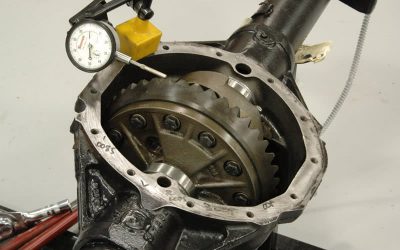
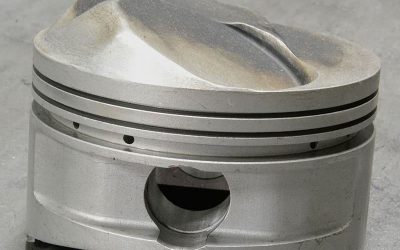
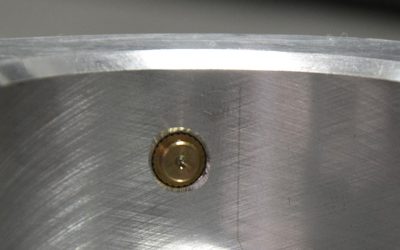
0 Comments